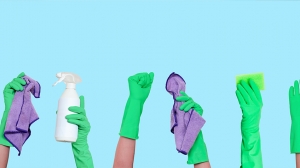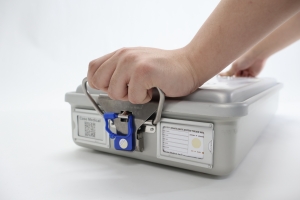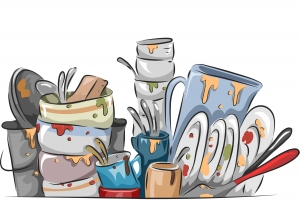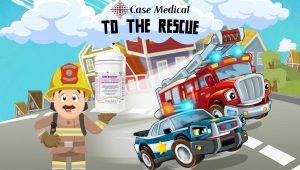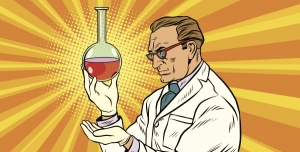When Failure is a Good Thing: The White "Glove" Test
A few times a month, I hear from a sales rep or a user about a failed wash indicator. It must be the indicator…can’t be our process and equipment. NO WAY!!! No one wants to learn that something is out of sync. This is especially troublesome when another indicator passes and our Case Soil indicator shows residue on the coupon, a failure...
Keep Cleaning with Soap and Water
Cleaning helps prevent infection by physically removing germs, dirt, and other debris from surfaces and objects. This removal significantly reduces the number of germs available to spread, making it less likely that individuals wi
Alkaline Products Can Dissolve Everything, Even the Skin of a Strawberry
Many people still don’t know that fruits and other produce bought from the grocery store are covered with a thin layer of wax to prevent spoilage. Removing the wax is as easy as soaking the produce in a solution of water and baking soda for 15 minutes. The alkaline solution will dissolve the wax, and any pesticides leaving you with safe/healthy produce after a light rinse...
Skin Health is Important, So is the Passive Seal on Container Surfaces
When I was a teenager, I didn’t know how to protect my skin from the sun. I used a visor to capture the sun’s rays and baby oil to bronze and darken my skin to get a deep tan. It was what all my friends did.
The No Rinse Thing Freaks Me Out!
“If you don't rinse your dishes after washing them, you'll still have food residue and bacteria on them. Plus, you've mixed the residue of ALL your dishes together. So if one of them had something bad on it, now they all do.”
Case Medical to the Rescue: Monitoring pre-treatment at Point of Use
At Case Medical we create innovative products that can meet your needs for instrument processing, asset management, sterilization, organization, and transport. We solve problems you identify by developing products to meet your needs...
Chemical catastrophe in our own backyard... We can do better
According to the American Sustainable Business Network, “Many common personal care products contain chemicals linked to a broad range of serious health impacts. Exposures are numerous and frequent, and small exposures can have large consequences. Consumers have been demanding change. Responsible businesses are using safer alternatives.” A pending New York law would boost momentum nationally by banning many of the worst chemicals and driving innovation for safer alternatives…
Spring Cleaning Week: Caution, Disposable Wipes and “Fatbergs”
This week is formally designated “Spring Cleaning Week” by the U.S. EPA. It is a time for cleaning or organizing your home or enterprise. It typically falls on the first day of spring, the Persian New Year, and coincides with the Jewish practice of throughly cleansing the home for Passover. Look at your inventory of cleaning products to determine what's truly needed and how safe they are to use. Consider reducing the number of SKU's and replacing some of the more caustic chemicals of concern with safer alternatives. Single use wipes have become very popular for cleaning surfaces, wiping baby messes, for personal care, and throughout healthcare facilities for numerous purposes...
Cleaning Boosters that Actually Work
This article in Reader’s Digest “8 Secret Ingredients You Should Be Adding to Your Laundry” is an inspiration. Right from the first statement “Don't toss in a laundry pod and think you're done." When you take a moment to unpack the premise that any detergent will do, it makes a lot of sense not just for laundry at home, but for reprocessing contaminated devices in SPD, too. Life in the SPD is complicated, but your cleaning regimen doesn’t have to be, nor does your detergent need to be.
Misinformation... It’s Many Forms
As the title for this week’s blog says, “Misinformation comes to us in many forms” and it’s not just through social media, though social media is the superhighway or Autobahn of misinformation with no speed limits. Take for example our blog from last week discussing “flushable” wipes. When the product label says...



